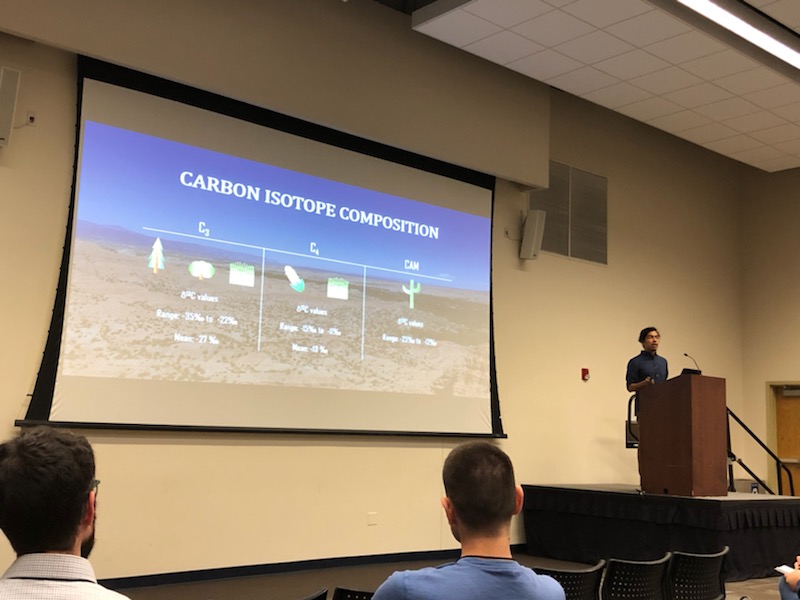By Eleanor Gardner (@egardner)
NAPC 2019 in Riverside, CA, was my third NAPC conference and it was by far my favorite. My first NAPC, back in 2009 in Cincinnati, was the first international conference I had ever attended and I recall being very nervous. It was fun and extremely educational, but I was so focused on memorizing the names of the famous paleontologists my graduate advisor was introducing me to that I was stressing myself out! When I went to NAPC 2014 in Gainesville, I was a faculty member at the University of Tennessee at Martin, and I remember feeling more at ease because I was slightly established within the field of paleontology. Who would’ve predicted that a little over one year later, I’d be moving to Gainesville to work at the FLMNH on the FOSSIL Project?! It’s funny how life works out sometimes. Prior to NAPC 2019, I was worried that I wouldn’t be able to attend the conference due to budget cuts at the University of Kansas (my current employer). I was honored and very thankful to be invited to present as part of a panel in the “Past, Present, and Future of the FOSSIL Project” symposium at NAPC 2019. To me, the whole conference felt like coming home in a way: spending time with old friends, reconnecting with old colleagues and acquaintances, learning about new research and projects, and networking with (and even dancing with!) some of my paleontological heroes and future project collaborators.

It was inspiring and eye-opening to listen to the many fantastic talks in the “Engaging Diverse Communities in Paleontology: Innovative educational initiatives that connect culture to natural history” symposium. It is heartening to see the way the paleontological community has evolved to embrace these inventive and inclusive educational endeavors and projects. I walked away with lots of excellent notes about ways to improve engagement with the audiences we serve here at the KU Natural History Museum. Equally fun and informative was the “Broadening horizons of broader impacts” symposium the next day. It was motivating to hear about the ways that others have utilized various forms of media to improve their paleontological outreach. I hope to convince my colleagues at the KU NHM to incorporate the ‘Taphonomy: Dead and Fossilized’ board game into our social events! And in terms of research talks, my favorite was by Dr. Karen Chin on mutualistic relationships as evidenced through fossil coprolite (and other excretory) deposits.

And, of course, I had a blast sneaking away for a day during the conference to visit the La Brea Tar Pits & Museum in LA! I truly enjoyed spending the day there, and I loved how prominently avian taphonomy was featured throughout the exhibits.
|
|
My sincere thanks to my old bosses, colleagues, and friends at the FOSSIL Project for funding my trip to NAPC 2019. It is certainly a conference I will always remember.






















